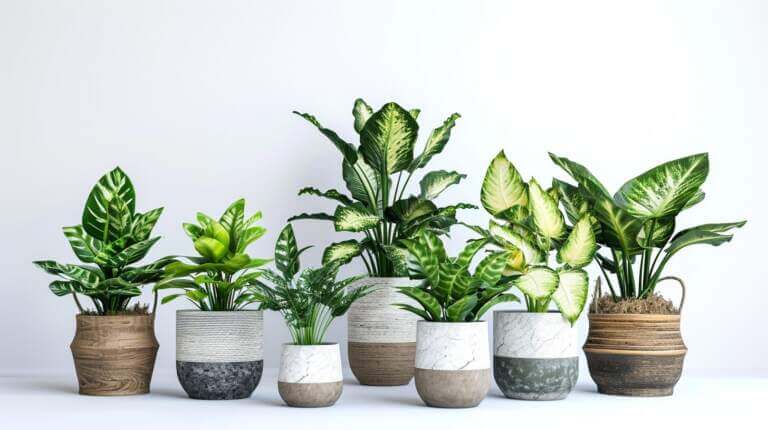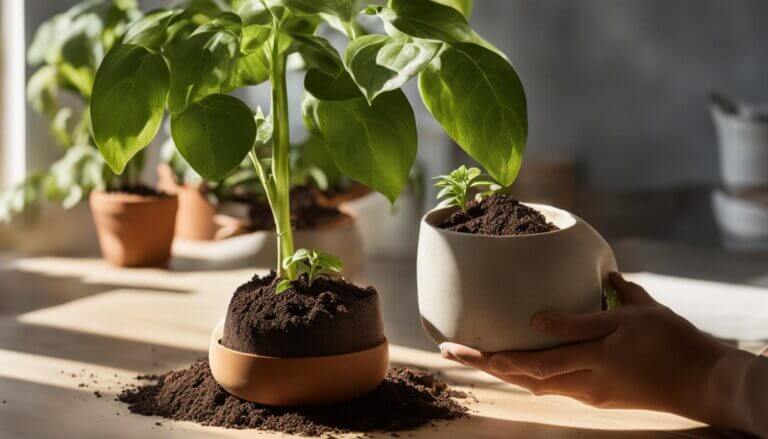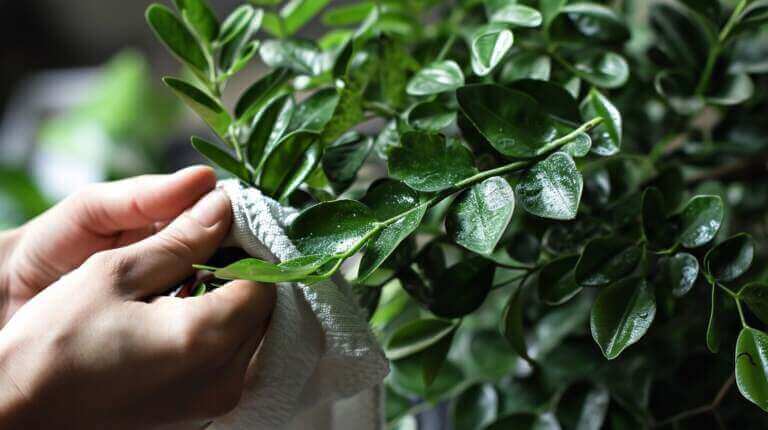Calathea Prayer Plants: Why the Calathea Leaves Close at Night and How They Unfurl
Prayer plants, also known as Calathea (Maranta leuconeura), are tropical houseplants with stunningly colored foliage. One intriguing characteristic of these plants is that their leaves move at night and unfurl during the day. The movement of the leaves, known as nyctinasty, is a natural response to darkness and the path of the sun. This unique behavior has earned them the nickname “Prayer Plant.” But why exactly do the leaves of Calathea prayer plants move at night, and how do they unfurl? In this article, we will explore the reasons behind this phenomenon and delve into the fascinating world of Calathea plants.
Key Takeaways:
- Calathea prayer plants exhibit nyctinasty, where their leaves move in response to changes in light.
- During the day, the leaves follow the path of the sun, maximizing their exposure to sunlight.
- At night, the leaves fold up to conserve energy and protect the plant from excessive darkness.
- Factors such as watering, humidity, light, and temperature can affect the movement of Calathea leaves.
- To care for Calathea prayer plants, maintain consistent moisture, provide indirect light, and adequate humidity and temperature.
Proper care is essential for maintaining healthy and vibrant Calathea prayer plants. Here are some tips to ensure their well-being. First, watering should be done when the top few centimeters of soil have dried out, ensuring the soil remains consistently moist but not waterlogged to avoid root rot. Providing bright to medium indirect light is ideal for these plants, avoiding direct sunlight that can cause leaf damage. Maintaining humidity levels of at least 50% is crucial for Calathea plants, and methods such as misting, using humidifiers, or placing them in a more humid area of the home can help achieve this. Lastly, keeping the temperature within the range of 60 to 80 degrees Fahrenheit is important for optimal growth. With proper care, your Calathea prayer plants will flourish with their distinctive leaf movement and stunning foliage.
Why Do Calathea Leaves Move at Night?
Calathea prayer plants exhibit a fascinating phenomenon called nyctinasty, where their leaves move in response to changes in light. During the day, the leaves of Calathea plants bend and follow the path of the sun, maximizing their exposure to sunlight for photosynthesis. This movement helps them absorb more light energy and thrive in their tropical environments. However, as the sun sets and darkness falls, a mesmerizing transformation takes place. The leaves of Calathea prayer plants fold up and close together, resembling praying hands.
This behavior is not a sign of distress but an inherent adaptation to their environment. By folding their leaves at night, Calathea plants conserve energy and protect themselves from excessive darkness. It’s a clever survival strategy that allows them to withstand the night and flourish during the day when the sun rises again. Witnessing the movement of Calathea leaves is truly a remarkable experience, and it adds to the allure and beauty of these unique houseplants.
So, why do Calathea leaves move at night? It’s a response to darkness, a dance choreographed by nature that showcases the resilience and adaptability of these prayer plants. The next time you catch your Calathea plants in their nighttime position, take a moment to appreciate the intricate design and the silent prayer of their leaves.
Table: Factors That Affect the Movement of Calathea Leaves
| Factor | Effect |
|---|---|
| Watering | Inadequate watering can lead to leaf curling and drooping. Calathea plants prefer consistently moist but not waterlogged soil. |
| Humidity | Low humidity levels can cause the leaves to curl and become dry. Calathea plants thrive in humid environments. |
| Light | The amount of light the plant receives affects leaf movement. Calathea prayer plants prefer bright to medium indirect light. |
| Temperature | Extreme temperatures, whether too cold or too hot, can impact the movement of Calathea leaves. They prefer temperatures between 60 and 80 degrees Fahrenheit. |
Factors That Affect the Movement of Calathea Leaves
When it comes to understanding the movement of Calathea leaves, it’s important to consider several factors that can influence their behavior. These factors include watering, humidity, light, and temperature, which all play a crucial role in the overall health and well-being of these tropical plants.
Firstly, watering is a key factor to consider. Calathea prayer plants prefer consistently moist soil, as allowing the soil to become too dry can lead to curling and drooping leaves. It’s important to water these plants when the top few centimeters of soil have dried out, ensuring that the soil remains consistently moist but not waterlogged to avoid root rot.
Secondly, humidity levels can greatly impact the movement of Calathea leaves. These plants thrive in humid environments, so maintaining adequate humidity is essential. Low humidity levels can cause the leaves to curl and become dry. To increase humidity, misting the leaves or using a pebble tray filled with water can help create a more favorable environment for the plant.
The amount of light the plant receives is another critical factor. Calathea prayer plants prefer bright to medium indirect light and can tolerate low light conditions. Too much or too little light can lead to leaf curling. It’s important to provide the plant with the appropriate amount of light to ensure healthy leaf movement.
Table: Factors Affecting Calathea Leaf Movement
| Factors | Impact on Leaf Movement |
|---|---|
| Watering | Inadequate watering can cause curling and drooping leaves. |
| Humidity | Low humidity levels can lead to leaf curling and dryness. |
| Light | Too much or too little light can result in leaf curling. |
| Temperature | Extreme temperatures can impact leaf movement. |
How to Care for Calathea Prayer Plants
Proper care is essential for maintaining healthy and vibrant Calathea prayer plants. To ensure their well-being, follow these care tips:
First, watering should be done when the top few centimeters of soil have dried out. This will ensure that the soil remains consistently moist but not waterlogged, preventing root rot.
Next, provide bright to medium indirect light for your Calathea plants. Avoid exposing them to direct sunlight as it can cause leaf damage. Place them in a well-lit area that receives gentle, filtered light.
Maintaining humidity levels of at least 50% is crucial for Calathea plants. You can achieve this by misting the leaves regularly, using a humidifier, or placing them in a more humid area of your home, such as a bathroom or near a kitchen sink.
Lastly, keep the temperature within the range of 60 to 80 degrees Fahrenheit. Calathea prayer plants thrive in these temperatures and may suffer if exposed to extreme cold or heat. Avoid placing them near cold drafts or heat sources like radiators or vents.
FAQ
Why do the leaves of my calathea plant curl?
Curling leaves in calathea plants are often a result of incorrect watering. Both underwatering your plant and overwatering can cause the leaves to curl. It’s important to keep the soil consistently moist but not waterlogged to prevent root rot.
Why do prayer plant leaves close at night?
The closing of leaves at night is a phenomenon known as nyctinasty. This is a response to darkness and is common in prayer plants. It’s part of why they’re called “prayer plants”, as the leaves fold up at night, resembling hands in prayer.
How should I care for my prayer plant?
Prayer plant care involves providing high humidity, consistent watering, and indirect sunlight. Using a pebble tray filled with water can help increase the humidity around your plant. Also, make sure your plant is in a pot with drainage holes to prevent overwatering.
Why are the leaves on my prayer plant turning yellow?
Yellow leaves can be a sign of several issues, including too much light, overwatering, or a lack of humidity. If the plant gets too much direct sun, the leaves may turn yellow. Similarly, overwatering can cause root rot, leading to yellow leaves.
How often should I water my calathea plant?
Calathea plants prefer their soil to be consistently moist, but not waterlogged. The top of the soil should be allowed to dry out slightly between waterings. Overwatering can lead to root rot, so it’s important to ensure good drainage.
How do I deal with pests on my prayer plant?
Common pests for prayer plants include spider mites. If you notice an infestation, you can mist the leaves and stems with water to dislodge the mites. For severe infestations, you may need to use a mild insecticide.
When should I repot my calathea plant?
You should repot your calathea plant when it becomes root-bound or the soil is depleted. This is typically every 12-18 months. Repotting can also encourage the growth of new leaves.







